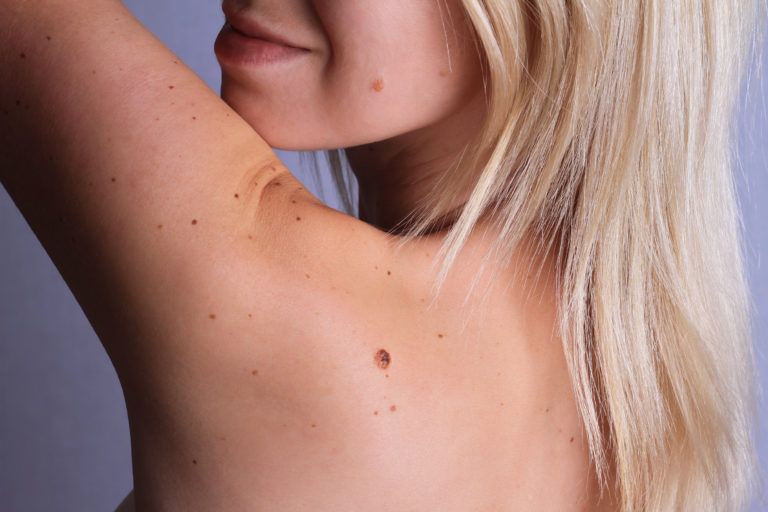
What are Moles?
A mole (the scientific term is nevus, plural nevi) is a benign, noncancerous, growth of pigment cells ( AKA melanocytes).
Moles are extremely common and virtually every person has at least one mole (nevus). It is not clear why these benign collection of pigment cells develop, though some people are more prone than others to developing nevi. Risk factors that increase one’s tendency to developing moles include: Caucasian race, fair skin, family history, hormones, and sun exposure. African-Americans and Asians are more likely than Caucasians to develop moles on the palms, soles and nail beds (i.e. Acral nevi).
Frequently Asked Questions (FAQ)
Some people are born with moles (AKA congenital moles), however most are acquired after birth. The majority of moles tend to erupt during early childhood and then again around puberty. By in large, the vast majority of moles will be obvious by 30 years of age. Development of a new mole after 30 years of age (and particularly after 40 to 50 years of age) is much less common and would therefore warrant examination by a dermatologist to exclude the possibility of skin cancer. Interestingly, it is not uncommon for moles to spontaneously regress and disappear later in life.
Most people have one or two populations of moles that look similar to one another, also known as “signature nevi.” If a mole looks unique and different than a person’s other moles, (i.e. “ugly duckling”), it is best to undergo skin examination by dermatologist. Remebering the ABCDE’s of moles is also helpful.
Those people with more than 50 to 100 moles on their skin surface are felt to be at higher risk for melanoma.
Benign Moles are uniform in color, with even borders, and good symmetry. Some are flat, while other are raised, and some have a combination of both components. Benign moles tend to have normal “ABCDE’s.”
Dysplastic moles (AKA atypical nevi) are characterized by larger size, multiple colors, ill-defined borders and asymmetry. Despite the fact that many of these moles may look suspicious for melanoma, they are not considered cancerous when examined under a microscope. It is sometimes difficult for a dermatologist to know whether a mole represents an atypical nevus or melanoma and therefore biopsy is often necessary to distinguish between the two.
People with atypical nevi are felt to be at higher risk for melanoma.
No, they are not. Dysplastic moles occupy an intermediate position on a continuum with common benign moles on one end and melanoma at the other end.§ The relationship between atypical nevi and melanoma is complex. The odds of any individual atypical mole turning in the melanoma is quite low; however those patients with multiple atypical moles are felt to be at higher risk of developing melanoma, in general.
Most pathologists grade atypical moles as either mild, moderate or severe. In general, a mildly atypical mole is felt to have a very low risk of turning into melanoma, and therefore requires no further treatment other than periodic monitoring. Moderate atypical moles are more controversial. In general, it is recommended to re-excise (i.e. remove with stitches) a moderately atypical mole, if the mole was not completely removed at the time of biopsy. If, however, the moderately atypical mole was felt to be completely removed at the time of biopsy (with clear margins), then it is usually safe to monitor for clinical recurrence (i.e. observe for dark pigmentation at the biopsy site). Severely atypical moles are much more concerning with a higher risk of turning into melanoma, and therefore, usually require a wide excision to ensure complete removal regardless of the initial margins on biopsy.
Those patients with atypical moles should undergo monthly self examinations to monitor for any changes in his/her moles, as well as an annual full-body skin examination with a dermatologist. Certain patients may need more frequent monitoring depending upon biopsy results, clinical findings and family history.
Sources
§Bolognia, Jorizzo and Rapini. Dermatology. Second edition, chapter 112: Benign Melanocytic Neoplasms Dermnet NZ
www.Dermnetnz.com











